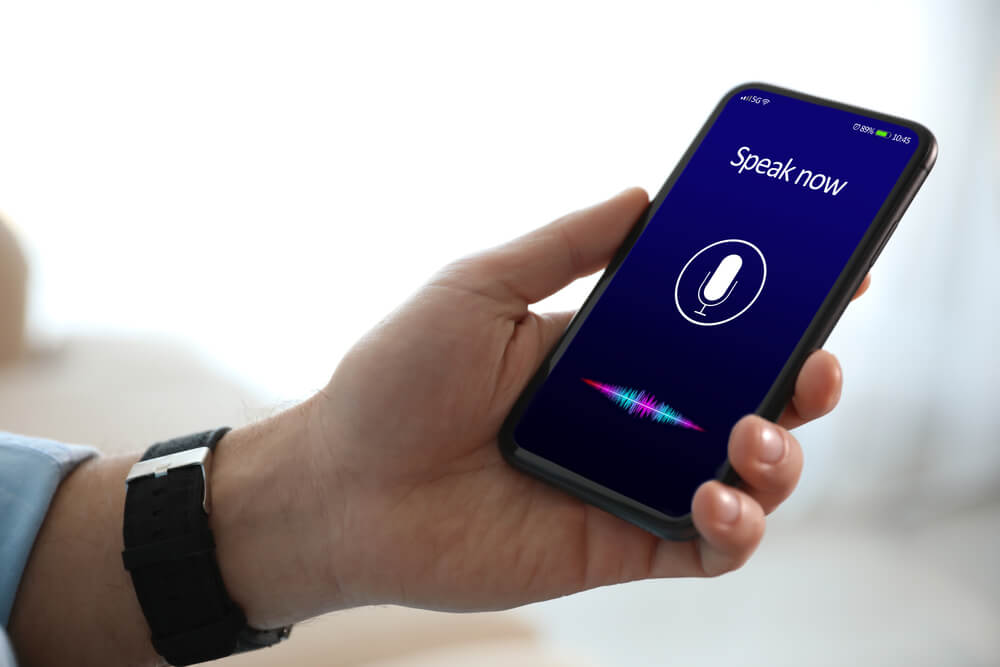
5 Effective B2B Demand Generation Best Practices To Try Now
Using demand-generation strategies helps business-to-business (B2B) companies attract clients. These techniques drive attention and show clients you have what they are looking for, but in the fast-changing B2B market, it can be difficult to stay on top of what is effective.
This guide shows you the top five techniques for current demand generation:
 Updated and relevant customer data gives businesses valuable insight into consumer behaviors. These also reveal marketing trends. Data is one of the main parts of a great demand strategy.
Data helps to create more effective targeted campaigns. Using updated data can help businesses avoid wasting resources on campaigns that fail to connect with prospects. It can help establish the B2B company as a trustworthy and reputable source of information, products, or services.
Data also allows companies to adapt their strategies ASAP by keeping up with the latest marketing trends. These techniques help improve data collection and analysis for demand generation.
Updated and relevant customer data gives businesses valuable insight into consumer behaviors. These also reveal marketing trends. Data is one of the main parts of a great demand strategy.
Data helps to create more effective targeted campaigns. Using updated data can help businesses avoid wasting resources on campaigns that fail to connect with prospects. It can help establish the B2B company as a trustworthy and reputable source of information, products, or services.
Data also allows companies to adapt their strategies ASAP by keeping up with the latest marketing trends. These techniques help improve data collection and analysis for demand generation.
 Voice search is a new and growing way that customers seek out information and make informed decisions. B2B businesses lose out if they do not consider voice search optimization when considering their marketing tactics. By optimizing demand generation strategies for voice search, B2B companies become more accessible.
Here are some techniques that can help promote voice search marketing:
Voice search is a new and growing way that customers seek out information and make informed decisions. B2B businesses lose out if they do not consider voice search optimization when considering their marketing tactics. By optimizing demand generation strategies for voice search, B2B companies become more accessible.
Here are some techniques that can help promote voice search marketing:
 B2B companies use customer information to create demand-generation strategies. By implementing data management standards and compliance techniques, they ensure the proper protection of customer information. They also provide a strong foundation for their demand-generation techniques.
Adopting ethical data handling also promotes customer loyalty and improves satisfaction. Consumers will likely do business with companies they can trust, especially with critical data and information. Also, compliance with these regulations produces a competitive advantage and boosts your reputation and reliability in prospects’ eyes.
These techniques can help B2B companies with data management compliance.
B2B companies use customer information to create demand-generation strategies. By implementing data management standards and compliance techniques, they ensure the proper protection of customer information. They also provide a strong foundation for their demand-generation techniques.
Adopting ethical data handling also promotes customer loyalty and improves satisfaction. Consumers will likely do business with companies they can trust, especially with critical data and information. Also, compliance with these regulations produces a competitive advantage and boosts your reputation and reliability in prospects’ eyes.
These techniques can help B2B companies with data management compliance.
- Using relevant and updated data
- Adding conversion rate optimization (CRO)
- Prioritizing voice search marketing
- Putting customers at the heart of messaging
- Focusing on data management standards and compliance
1. Using Relevant and Updated Data
 Updated and relevant customer data gives businesses valuable insight into consumer behaviors. These also reveal marketing trends. Data is one of the main parts of a great demand strategy.
Data helps to create more effective targeted campaigns. Using updated data can help businesses avoid wasting resources on campaigns that fail to connect with prospects. It can help establish the B2B company as a trustworthy and reputable source of information, products, or services.
Data also allows companies to adapt their strategies ASAP by keeping up with the latest marketing trends. These techniques help improve data collection and analysis for demand generation.
Updated and relevant customer data gives businesses valuable insight into consumer behaviors. These also reveal marketing trends. Data is one of the main parts of a great demand strategy.
Data helps to create more effective targeted campaigns. Using updated data can help businesses avoid wasting resources on campaigns that fail to connect with prospects. It can help establish the B2B company as a trustworthy and reputable source of information, products, or services.
Data also allows companies to adapt their strategies ASAP by keeping up with the latest marketing trends. These techniques help improve data collection and analysis for demand generation.
- Perform thorough research on your target audience.
- Create customer personas. Define customer demographics, needs, budgets, social habits, professional experience, etc.
- Develop a database for demand generation. This can help analyze, filter, and segment the target market.
- Use a lead scoring system to define where the client is in the customer journey.
2. Adding CRO
CRO includes tactics that define a business’s website and landing pages, increasing the traffic of visitors who wish to buy products, order a service, or fill out a form. Optimization strategies such as continuous user behavior analysis and A/B testing are part of CRO. It works alongside demand generation techniques to enhance the value of prospects who visit the B2B company’s website. A business that prioritizes CRO ensures revenue growth and a smooth user experience (UX). Do you need lead generation or demand generation? Answer this before adopting new strategies. Here are some best practices for adopting CRO with demand generation:- Use a testing platform such as Google Optimize.
- Install CRO in specific areas of your website. Use it on your homepage, pricing page, blogs, and landing pages.
- Use word-based calls-to-action (CTAs) within blog posts. These can convert better than regular CTAs at the bottom of a page.
- Include lead flows to attract more attention and provide value. Use a slide-in box, pop-up box, or drop-down banner.
- Run regular testing on landing pages to find the best design and content.
- Identify posts with the highest web traffic but low conversion rates. Optimize these posts using search engine optimization (SEO) strategies or improve CTAs.
- Perform CRO checks on high-traffic pages. Use Google Analytics to discover traffic in a more extended time frame. This ensures a better look at the effectiveness of a webpage.
- Consider the above-the-fold techniques. Try out various marketing elements such as titles, navigations, content, and images above the fold.
3. Prioritizing Voice Search Marketing
 Voice search is a new and growing way that customers seek out information and make informed decisions. B2B businesses lose out if they do not consider voice search optimization when considering their marketing tactics. By optimizing demand generation strategies for voice search, B2B companies become more accessible.
Here are some techniques that can help promote voice search marketing:
Voice search is a new and growing way that customers seek out information and make informed decisions. B2B businesses lose out if they do not consider voice search optimization when considering their marketing tactics. By optimizing demand generation strategies for voice search, B2B companies become more accessible.
Here are some techniques that can help promote voice search marketing:
- Use conversational language when creating content. This optimizes natural language queries.
- Include long-tail keywords and more question-specific keywords. These are words that clients are more likely to use when conducting voice searches.
- Ensure the business website is mobile-friendly. People using voice search are often using their mobile devices. Improve loading times, use a responsive design, simplify forms and navigation, and keep content short.
- Optimize for Google Business Profile (GBP) listings to increase chances of showing up in local voice search results. Add keywords to the business description and use the correct categories and subcategories. Ensure accurate contact information.
4. Putting Customers at the Heart of Messaging
Another effective demand-generation strategy is prioritizing customer-focused messaging. By putting customers first in marketing messaging, businesses show a deeper understanding of their preferences and needs. They create an engaging and memorable brand experience for customers, promoting their brand as the best solution for their clients’ needs. This begins with knowing your customers:- Research actual words your prospects use. Do this by sitting in on demos, meetings, and prospect calls.
- Talk to critical analysts about the industry. Ask about purchase drivers, benefits, features, decision-making processes, ROI, etc. The more inquiries you can conduct, the better your data will be.
- Perform competitive analysis for the past few years. Include events such as new product launches, emerging trends, etc.
5. Focusing on Data Management Standards and Compliance
 B2B companies use customer information to create demand-generation strategies. By implementing data management standards and compliance techniques, they ensure the proper protection of customer information. They also provide a strong foundation for their demand-generation techniques.
Adopting ethical data handling also promotes customer loyalty and improves satisfaction. Consumers will likely do business with companies they can trust, especially with critical data and information. Also, compliance with these regulations produces a competitive advantage and boosts your reputation and reliability in prospects’ eyes.
These techniques can help B2B companies with data management compliance.
B2B companies use customer information to create demand-generation strategies. By implementing data management standards and compliance techniques, they ensure the proper protection of customer information. They also provide a strong foundation for their demand-generation techniques.
Adopting ethical data handling also promotes customer loyalty and improves satisfaction. Consumers will likely do business with companies they can trust, especially with critical data and information. Also, compliance with these regulations produces a competitive advantage and boosts your reputation and reliability in prospects’ eyes.
These techniques can help B2B companies with data management compliance.
- Identify business goals. Well-defined goals determine data collection, storage, management, cleaning, and analysis.
- Perform regular checks for accuracy and quality.
- Organize customer data and use a good customer relationship management (CRM) system.
- Automate data management tasks with a CRM system.
- Make regular CRM data cleansing a priority.
- Set up various levels of permissions for data access. This ensures the right people can access data when they need it.
- Focus on data security with a management plan and steps to handle potential breaches.
Summing Up
With the latest demand generation strategies, B2B companies can improve customer interest in their products or services. By using relevant and updated data, engaging in CRO strategies, and prioritizing voice search, B2B companies can enhance demand generation. Combining these strategies with a customer-centric approach to messaging and implementing data management standards and compliance provides a tested approach. Companies can ensure quality results and cut risks by partnering with a trusted demand generation expert such as Digital Authority Partners. Contact DAP today and experience the difference.Want To Meet Our Expert Team?
Book a meeting directly here



